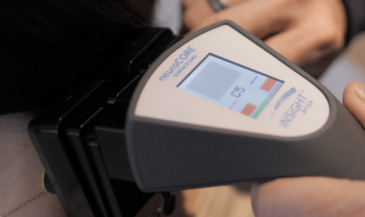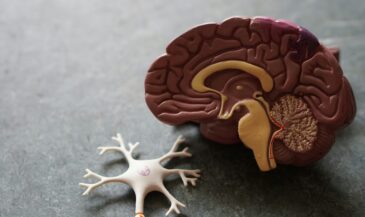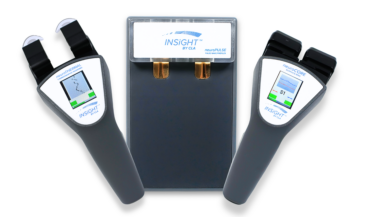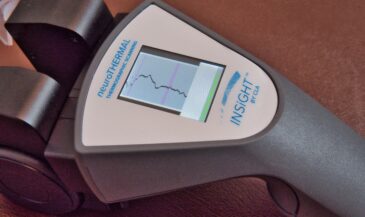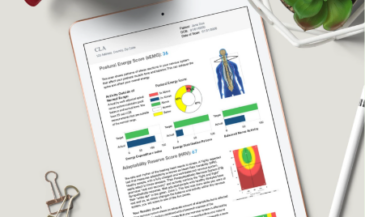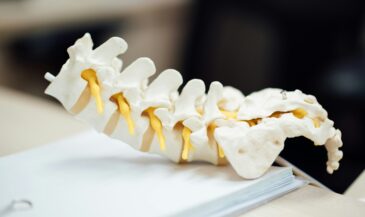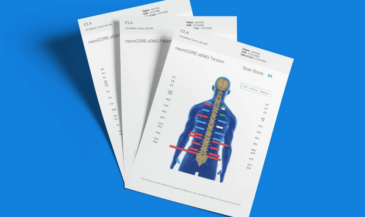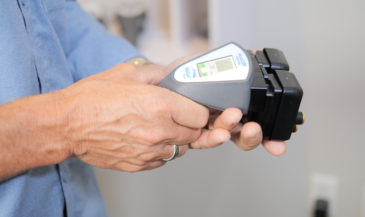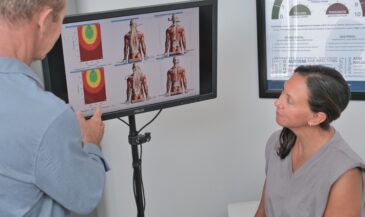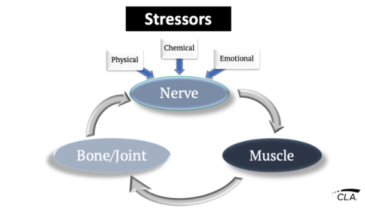Variability in heart rate reflects the vagal and sympathetic function of the autonomic nervous system, and has been used as a monitoring tool in clinical conditions characterized by altered autonomic nervous system function (1). Spectral analysis of beat-to-beat variability is a simple, non-invasive technique to evaluate autonomic dysfunction (2).
Heart rate variability analysis has been used in the assessment of diabetic neuropathy and to predict the risk of arrhythmic events following myocardial infarction (3). The technique has also been used to investigate autonomic changes associated with neurotoxicity (4), physical exercise (5), anorexia nervosa (6), brain infarction (7), angina (8), and panic disorder (9).
Normative data on heart rate variability have been collected (10,11,12). This technology appears to hold promise for assessing overall fitness. Gallagher et al (13) compared age matched groups with different lifestyles. These were smokers, sedentary persons, and aerobically fit individuals. They found that smoking and a sedentary lifestyle reduces vagal tone, whereas enhanced aerobic fitness increases vagal tone. Dixon et al (14) reported that endurance training modifies heart rate control through neurocardiac mechanisms.
In occupational health, the effects of various stresses of the work environment of heart patients and asymptomatic workers may be evaluated using heart rate variability analysis (15).
Acquired dysautonomia is one of the three elements in the three dimensional model of vertebral subluxation (16). Skin temperature changes, reflecting alterations in vasomotor tone, are used clinically to assess autonomic changes associated with vertebral subluxations. Heart rate variability represents a promising, non-invasive technology to assess subluxation-related autonomic function.
References
1. van Ravenswaaij-Arts CM, Kollee LA, Hopman JC, Stoelinga GB: “Heart rate variability.” Ann Intern Med 1993;118(6):436.
2. DeDenedittis G, Cigada M, Bianchi A, et al: “Autonomic changes during hypnosis: a heart rate variability power spectrum analysis as a marker of sympatho-vagal balance.” Int J Clin Exp Hypn 1994;42(2):140.
3. Kautzner J, Camm AJ: “Clinical relevance of heart rate variability.” Clin Cardiol 1997;20(2):162.
4. Murata K, Landrigan PJ, Araki S: “Effects of age, gender, heart rate, tobacco and alcohol ingestion on R-R interval variability in human ECG.” J Autonomic Nervous System 1992;37:199.
5. Nakamura Y, Yamamoto Y, Muraoka I: “Autonomic control of heart rate during physical exercise and fractal dimension of heart rate variability.” J Appl Physiol 1993;74(2):875.
6. Petretta M, Bonaduce D, Scalfi L, et al: “Heart rate variability as a measure of autonomic nervous system function in anorexia nervosa.” Clin Cardiol 1997;20(3):219.
7. “Abnormal heart rate variability as a manifestation of autonomic dysfunction in hemispheric brain infarction.” Stroke 1996;27(11):2059.
8. Kamalesh M, Burger AJ, Kumar S, Nesto R: “Reproducibility of time and frequency domain analysis of heart rate variability in patients with chronic stable angina.” Pacing Clin Electrophysiol 1995;18(11):1991.
9. Yeragani VK, Pohl R, Berger R, et al: “Decreased heart rate variability in panic disorder patients: a study of power-spectral analysis of heart rate.” Psychiatry Res 1993;46(1):89.
10. O’Brien IA, O’Hare P, Corrall RJ: “Heart rate variability in healthy subjects: effect of age and the derivation of normal ranges for tests of autonomic function.” Br Heart J 1986;55(4):348.
11. Toyry J, Mantysaari M, Hartikainen J, Lansimies E: “Day-to-day variability of cardiac autonomic regulation parameters in normal subjects.” Clin Physiol 1995;15(1):39.
12. Sato N, Miyake S, Akatsu J, Kumashiro M: “Power spectral analysis of heart rate variability in healthy young women during the normal menstrual cycle.” Psychosom Med 1995;57(4):331.
13. Gallagher D, Terenzi T, de Meersman R: “Heart rate variability in smokers, sedentary, and aerobically fit individuals.” Clin Auton Res 1992;2(6):383.
14. Dixon EM, Kamath MV, McCartney N, Fallen EL: “Neural regulation of heart rate variability in endurance athletes and sedentary controls.” Cardiovasc Res 1992;26(7):713.
15. Kristal-Boneh E, Raifel M, Froom P, Ribak J: “Heart rate variability in health and disease.” Scand J Work Environ Health 1995;21(2):85.
16. Kent C: “A three-dimensional model of vertebral subluxation.” The Chiropractic Journal 1998;12(9):38,50.






